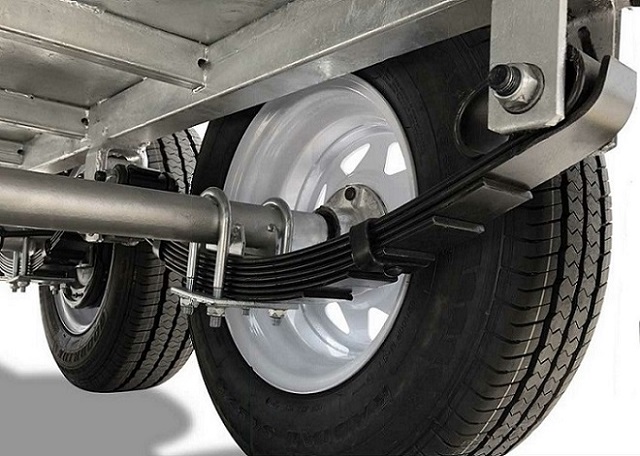5 Ways to tell you need Leaf Spring Replacements on Trailer
Posted on March 31, 2024

The Leaf Springs Suspension is a part of our trailers that we usually don’t think about unless it is brought to our attention for maintenance, and in most cases we tend not to have any idea about what condition they should be in or how they should look like.
How do you tell if they’re in prime condition or need replacing? How flat can the arches get? When is it too rusty? You won’t have to worry about a faulty trailer suspension again! You’ll soon know just how leaf springs should look like, how to evaluate their stability and when it’s time to get a replacement. Here are the 5 ways to tell when your leaf springs are about to kick the bucket:
What indicates your Leaf Springs are in good condition? A healthy leaf spring will maintain it’s curvature even under load and only flatten a bit loosing only about 1.5” of max arch. All leaves must be tightly compressed and the spring itself must have a smooth curve.
Signs of faulty leaf springs
There are some important signs to look out for when dealing with faulty leaf springs. Remember that although only one of the problems listed below may require leaf spring replacement, any combination of these characteristics is a sure sign that the springs have surpassed their expiration.
- Leaf Cracks
One crack is enough to take the initiative of replacing the spring. This is likely to occur in and around the grooves where the leaves join. Of course, cracking can cause further damage to the leaf springs, so it’s best to get a replacement before they break entirely. Do not wait for the spring to break to take action, and trust us, you don’t want this to happen while on the road.
- Sagging
If you’ve noticed that your trailer sags when under load, your springs may be worn beyond repair. This problem is relatively easy to spot; if you notice that your trailer is leaning forward or backward, it may be time to get new springs.
- Flat Arches
Some flattening is common if your trailer is loaded; But the spring must never completely lose its arch. If you find that your leaf springs are flat, either its replacement time or the trailer is overloaded. Make sure you’re not surpassing the maximum payload capacity of your enclosed trailer and if the flattening persists, its time to invest in new springs.
- Trailer Sway
A leaf spring is designed to prevent swaying your trailer, so if you notice this this while driving, it could be a sign of suspension wear. Swaying is especially a concern if your trailer has never swayed before and you’ve never affected the load. However, if you have always experienced trailer sway, you may want to check the tongue weight and load distribution first. Regardless of the reason, your trailer should not sway while on the road.
- Excessive rusting
It can be tough to determine how much rust to worry about on your springs, as they are all prone to corrosion over time. As for rust, consider it a problem if it’s related to the other issues above, if the leaf spring flakes or if it’s excessive enough to get in the way of maintenance. Some corrosion on the leaf springs is to be expected, but don’t let them flake away.
Now that you know what to look out for in leaf springs, you can consider getting a replacement if necessary. When replacing leaf springs, you should use the same size and style that were installed on your trailer. However, if it turns out that your trailer’s leaf springs are still in good shape, congratulations! You can skip the extra maintenance and enjoy the suspension. Anyway, be safe and enjoy the road!